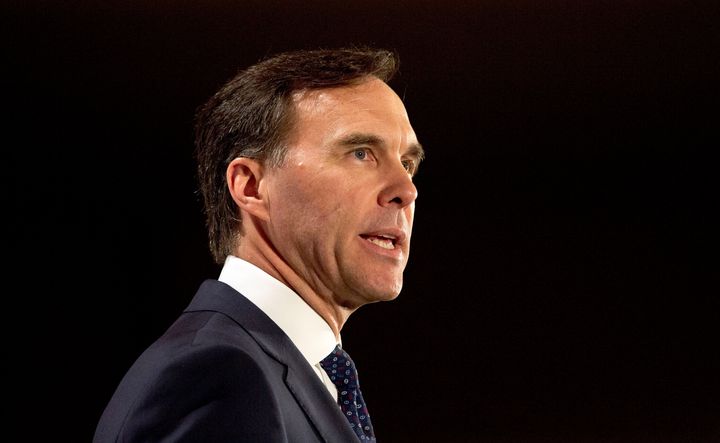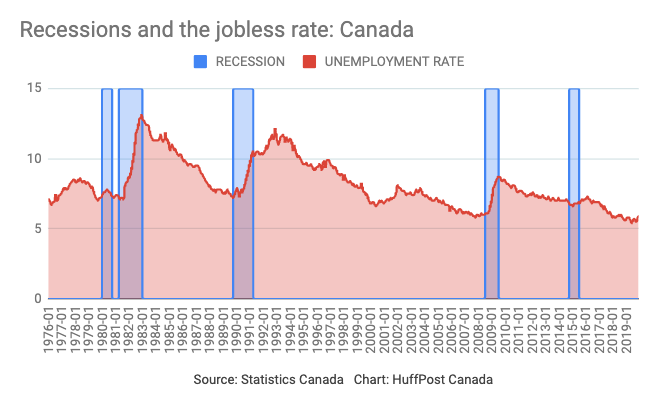
MONTREAL ― The news that Canada lost more than 71,000 jobs in November, the biggest nosedive since the financial crisis a decade ago, has many wondering whether the country is heading into recession.
Finance Minister Bill Morneau found himself on the defense in the wake of the nasty Statistics Canada report, assuring the public that “we’re dealing with an economy that’s strong.”
Watch: It’s easier to get rich in Canada than in the U.S. But it comes at a cost. Story continues below.
Well, of course he would say that. What politician would want to panic people by telling them their jobs will be at risk next year? That could only make things worse.
So ― setting aside the pronouncements of politicians ― is the unemployment spike a sign of a recession ahead? Traditionally, economists believed the jobless rate was a “lagging indicator” ― it only showed you what already happened, not what would happen.
But the thinking on that is changing, and a new economic indicator that became popular this year shows that, in the U.S., there is a perfect correlation between large spikes in unemployment and recessions.
The Sahm Rule, created by U.S. Federal Reserve economist Claudia Sahm, says that the U.S. economy is already in a recession if the unemployment rate jumps at least 0.5 percentage points above its three-month average ― essentially a steep jump in the jobless rate in a short time.
The rule is scarily accurate for the U.S. economy: Had it been known in the past, it would have signaled every recession since 1970, and given no false positives ― there are no times when the jobless rate spikes by that much and there is no recession.

Right now, the U.S. jobless rate is 3.5 per cent, a 50-year year low, so there is no sign of recession down south. But in Canada, unemployment spiked to 5.9 per cent last month, about 0.3 percentage points above its three-month moving average. That’s close but not quite the margin needed to ring the Sahm Rule’s recession alarm.
But does the rule apply in Canada? HuffPost decided to look into it, and you can breathe a sigh of relief, because the answer is no. Even a large spike in unemployment is no guarantee of a recession north of the border.

For instance, Canada’s unemployment rate jumped to 7.4 per cent in July 1976, from a three-month average of 6.9 per cent, enough to trigger the Sahm Rule alarm. But there was no recession, and the economy kept growing for another four years.
Another big spike in joblessness happened right at the end of 2001, during the dot-com bust and in the aftermath of 9/11, but Canada (unlike the U.S.) didn’t go through a recession at that time. It seems joblessness can’t be used to predict recessions in Canada.
So why does Canada see spikes in unemployment during “good” times, when the U.S. doesn’t?
The simple answer is Canada’s economy is less diversified. There are many regions that have one or two industries driving private-sector jobs ― think forestry in New Brunswick, or energy in Alberta. When one of these industries hits a rough patch, it has an outsized impact on the jobless rate.
That doesn’t apply to the U.S.’s much larger and more diversified economy. A slump in Maine’s lobster industry won’t be as noticeable in U.S. data as the same slump in P.E.I.
So while we may not have to worry about a recession, we may want to worry about these job numbers all the same, and keep a close eye on next month’s report to see if it’s a trend. History shows you don’t need a recession for Canadians to face hard times in the economy.